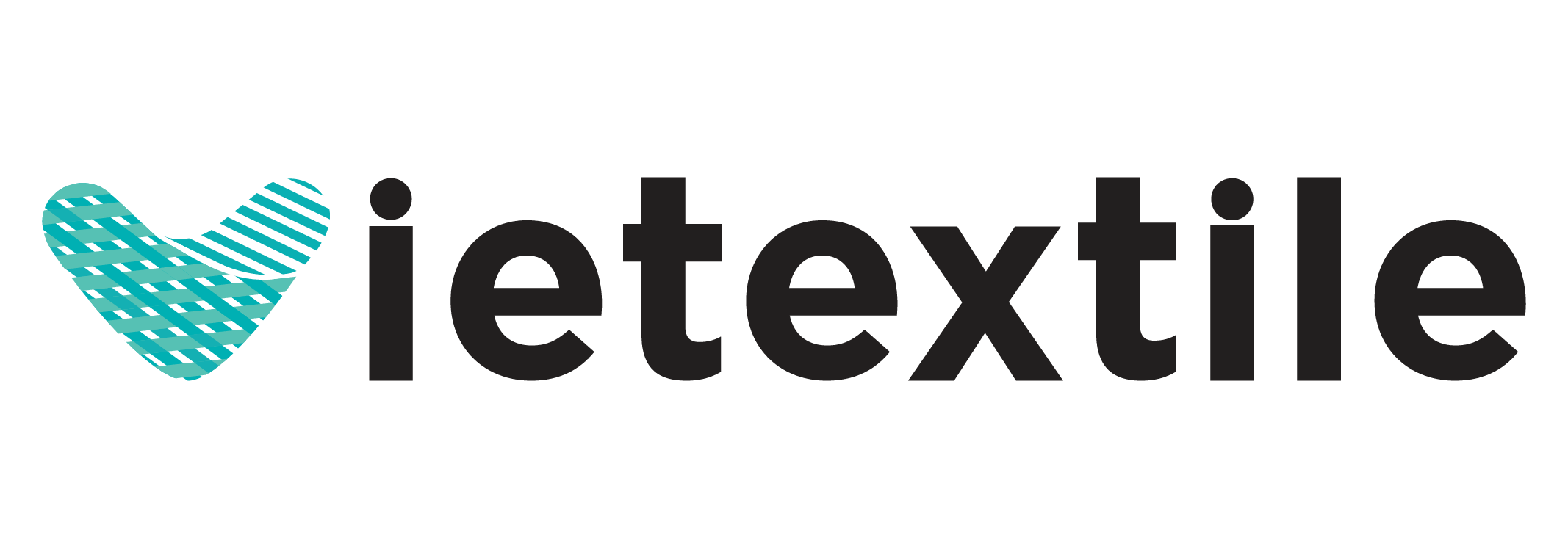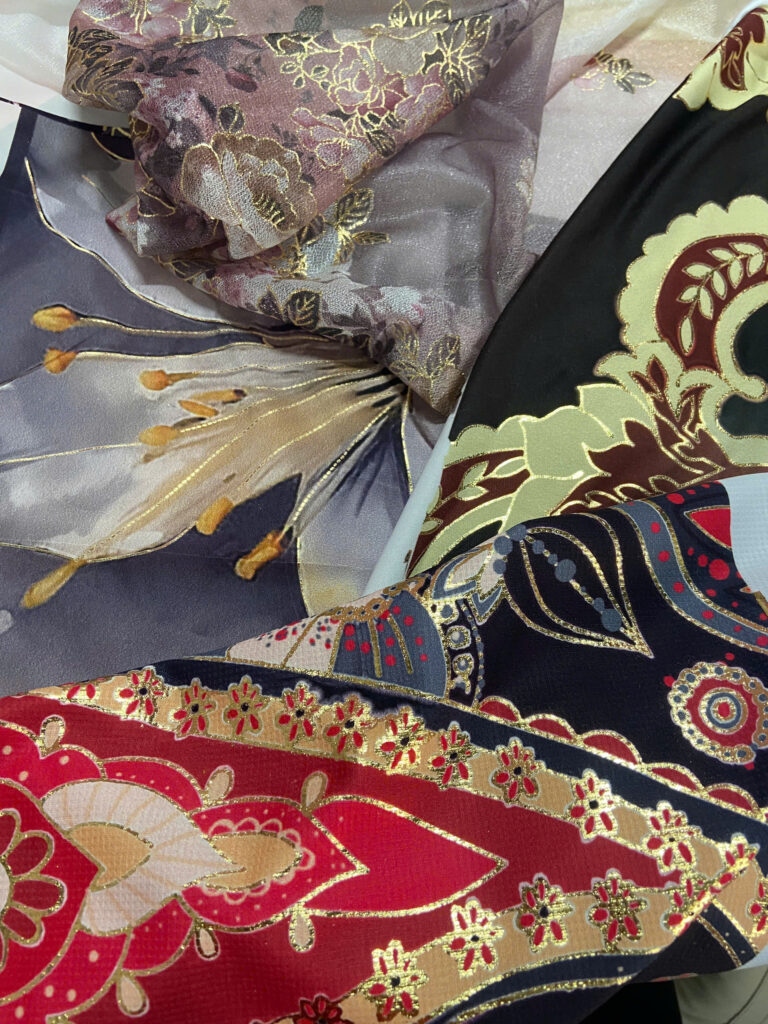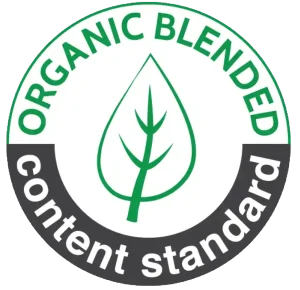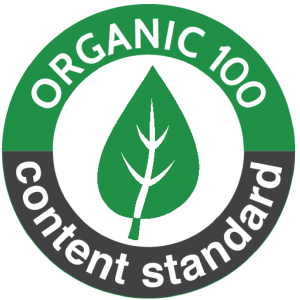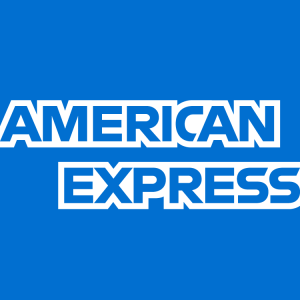With the explosive growth of personalized fashion, on-demand advertising, and custom interior design, investing in a roll-to-roll fabric printer has become a gateway to a thriving market. However, for a newcomer, the world of industrial textile printing is filled with technical jargon and costly pitfalls. Choosing the wrong technology or underestimating the true cost of operation can be a serious mistake.
This guide is designed to demystify the process. We will walk you through every critical aspect of selecting a roll-to-roll fabric printer—from the core technologies and material compatibility to calculating the total investment and finding a trustworthy partner. If you’re considering your first investment in this technology, this is the comprehensive, easy-to-understand roadmap you need.
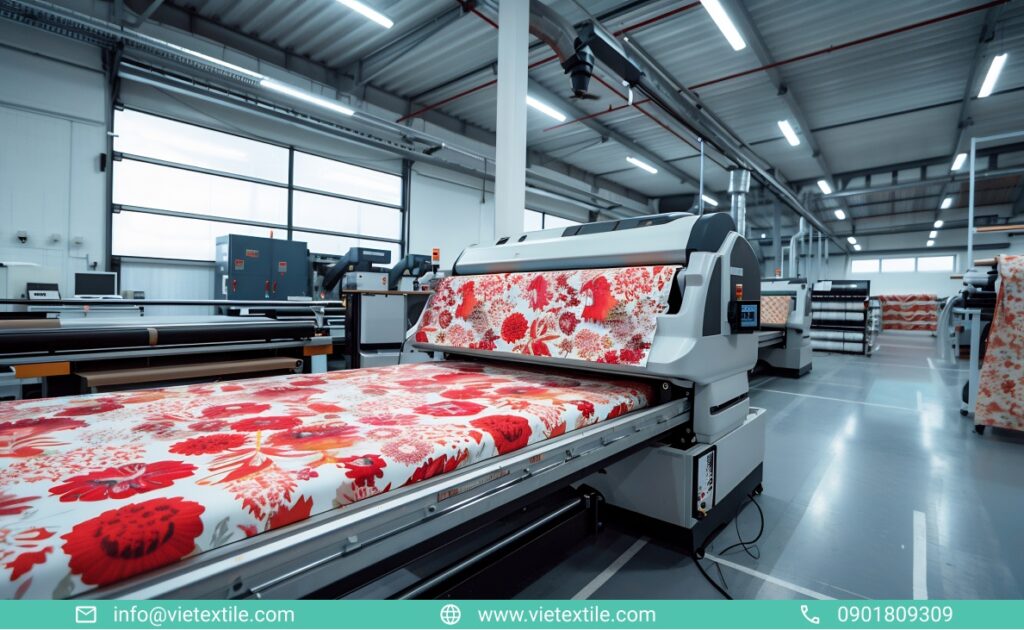
What is a Roll-to-Roll Fabric Printer?
Nội dung tóm tắt
ToggleA roll-to-roll fabric printer (also known as a fabric reel printer) is an industrial machine designed to print directly or indirectly onto large, continuous rolls of textiles like polyester, cotton, canvas, and silk. Unlike smaller, garment-based printers, these machines enable large-scale, uninterrupted production, making them essential for creating everything from fashion apparel and home furnishings to soft signage and banners.
A roll-to-roll fabric printer prints onto large rolls of material, ideal for fashion and signage. Beginners should first choose a technology (sublimation for polyester, direct-to-fabric for cotton), then assess print width, print head quality, and total cost of ownership before selecting a reliable supplier.
For a new business, to say in another words, investing in a roll-to-roll fabric printer is about more than just bringing production in-house. It’s about gaining full control over design quality, diversifying your product offerings, and having the agility to respond instantly to new market trends.
Step 1: Choose Your Printing Technology
This is the most important decision you will make, as it dictates the types of fabric you can print on and the products you can create. There are two primary technologies for a roll-to-roll fabric printer. For a more detailed comparison of the chemistries and processes involved, “ScienceDirect” offers an excellent introduction to digital textile printing technologies.
1.1 Dye-Sublimation (Indirect Printing)
This is a two-step process. First, the design is printed with sublimation ink onto special transfer paper. Then, a separate heat press is used to transfer the design from the paper to the fabric. The heat turns the ink into a gas that permanently bonds with the fabric fibers.
- Pros: Produces incredibly sharp, vibrant, and photorealistic images. The print has no feel or “hand” and is extremely durable against washing and wear.
- Cons: Primarily works only on polyester or polymer-coated materials. It cannot print on 100% natural fabrics like cotton. Requires investment in two pieces of equipment: the printer and a heat press.
1.2 Direct-to-Fabric (DTFb) Printing
This technology, as the name implies, uses specialized print heads to apply ink directly onto the surface of the fabric. The fabric typically requires a chemical pre-treatment to ensure the ink adheres correctly and doesn’t bleed. After printing with roll-to-roll fabric printer, the fabric is cured with an inline heating unit.
- Pros: Highly versatile, with the ability to print on a wide range of materials, including cotton, linen, silk, and blends. Offers a streamlined, one-step process.
- Cons: The initial investment in the machinery is often higher. The process can be more technically complex, requiring a deeper understanding of fabric pre-treatments and ink chemistry. For more detail, see our guide on Direct-to-Fabric (DTFb) printing.
Step 2: Match the Printer to Your Primary Fabric
Your choice of technology is directly tied to the fabric you plan to use most.
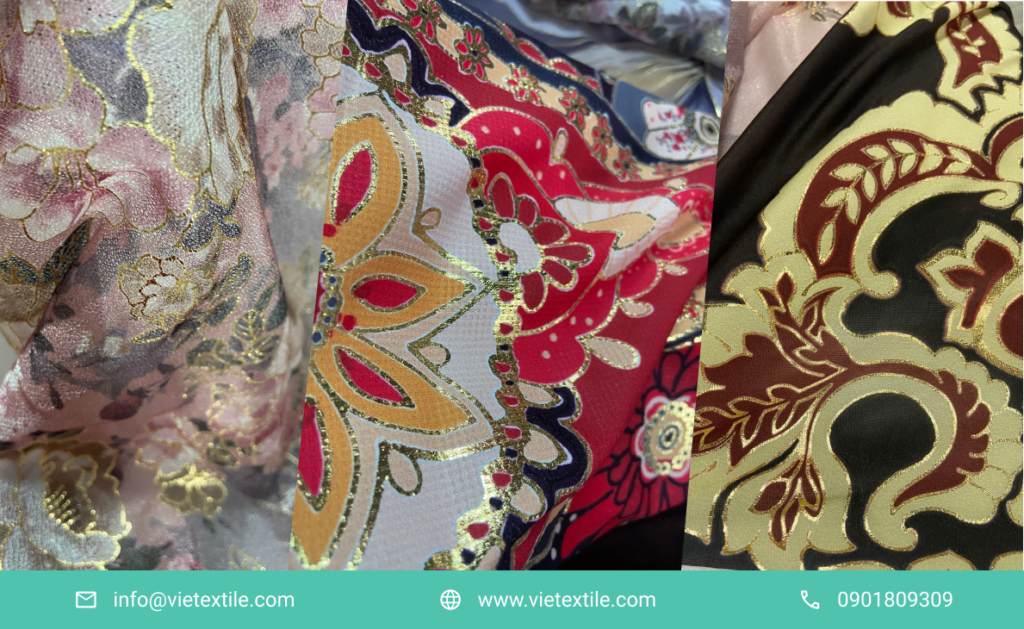
- For Polyester: If your core business is sportswear, activewear, banners, or soft signage, polyester is your fabric. Its synthetic nature is perfect for the dye-sublimation process, allowing for brilliant, permanent colors. For this application, a sublimation roll-to-roll fabric printer is the optimal choice.
- For Cotton & Natural Fibers: If you are focused on fashion t-shirts, natural home goods, or eco-friendly products, you cannot use sublimation. You will need a direct-to-fabric printer equipped with the correct ink, such as pigment or reactive inks, which are designed to bond with natural fibers.
Step 3: Select the Right Technical Specifications
Once you’ve chosen a technology, it’s time to evaluate the machine’s hardware.
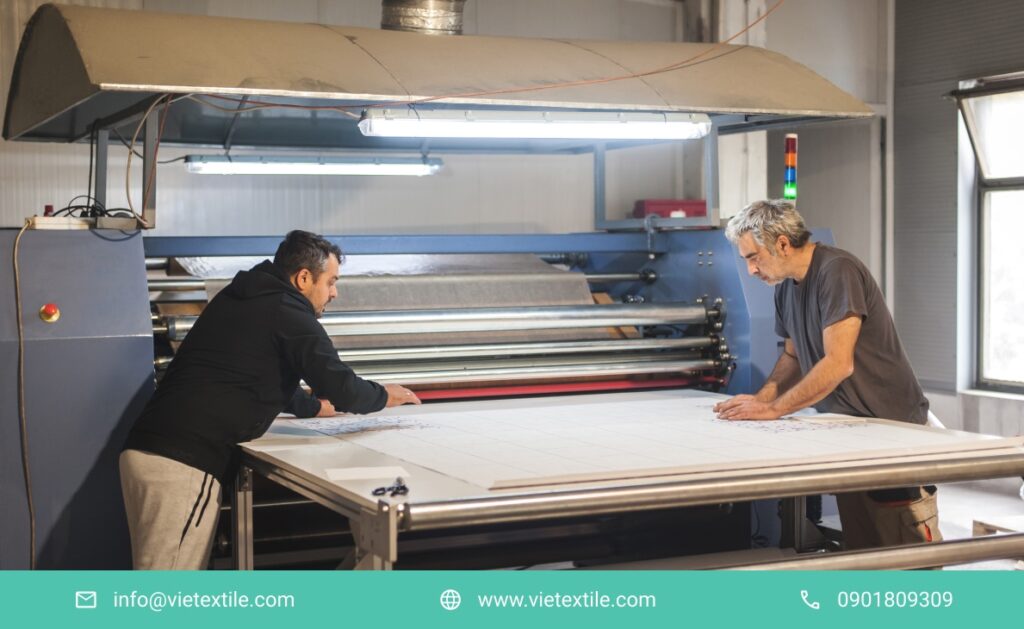
3.1 Print Width from roll-to-roll fabric printer (Throughput & Versatility)
- 1.2m – 1.6m (47″ – 63″): This is a common and versatile width, perfect for fashion apparel, t-shirts, fabric samples, and smaller banners. It’s a great starting point for small to medium-sized workshops.
- 1.8m+ (70″+): This larger format is necessary for products like curtains, bedding, tablecloths, and large-scale advertising backdrops. Choose this if your focus is on the home décor or event signage markets.
3.2 Print Head Quality (Speed vs. Detail)
The print head is the most critical component affecting both speed and quality.
- Epson Print Heads: Commonly found in entry-level to mid-range machines. They are renowned for producing exceptionally fine detail and high resolution. However, they are generally slower and can be more susceptible to clogging if not meticulously maintained, making a solid print head cleaning routine essential.
- Kyocera Print Heads: These are high-end, industrial-grade print heads. They are built for durability and high-speed, continuous production. While the initial investment is significantly higher, their reliability and speed make them the choice for serious industrial operations.
Step 4: Calculate the Total Cost of Ownership
A beginner’s biggest mistake is only considering the initial purchase price. You must budget for the total cost of ownership.
- The Machine Price: The upfront investment in the roll-to-roll fabric printer itself.
- Ongoing Consumables: This is a major recurring expense. It includes ink, transfer paper (for sublimation), and fabric pre-treatment chemicals (for direct printing).
- Hidden Costs: Don’t forget to factor in electricity consumption (these are powerful machines), the cost of routine maintenance, potential repair costs, and software subscriptions.
- Labor & Training: If you are new to the process, you may need to invest in professional training for your operators.
Step 5: Evaluate the Supplier and After-Sales Support
For a beginner, the quality of the supplier is just as important as the quality of the machine. A good partner provides a safety net for your investment.
- Lifetime Technical Support: What happens when you encounter an error mid-production? A reliable supplier will have a responsive technical team ready to help you troubleshoot, either remotely or on-site.
- Installation and Training: A professional supplier should offer on-site installation and comprehensive training to ensure your team can operate and maintain the machine correctly from day one.
- Parts and Service: Ensure the supplier has a ready stock of common spare parts (like print heads, dampers, and wipers) and can provide fast repair services to minimize your downtime.
Common Mistakes for Beginners to Avoid
- Don’t Buy an Overly Complex roll-to-roll fabric printer Machine: Start with a user-friendly machine that has clear documentation and strong technical support.
- Don’t Skip a Test Print: Always ask the supplier to print a sample of your design on your chosen fabric before you buy. This is the only way to truly judge the quality.
- Don’t Buy from an Unknown Source: Avoid unbranded “white-label” machines. They often lack quality control, have no reliable source for spare parts, and offer zero support.
- Don’t Underestimate the Importance of Support: Prioritize a supplier who offers excellent after-sales service. It will save you time, money, and stress in the long run roll-to-roll fabric printer.
Conclusion
Investing in a roll-to-roll fabric printer can be a transformative step for your business, opening up a world of creative and commercial possibilities. By taking a methodical approach—understanding the technology, defining your needs, analyzing the true costs, and choosing a supportive partner—you can make a confident decision that lays the foundation for long-term success in the dynamic world of digital textile printing.
FAQ
1. What’s the main difference between a sublimation and a direct-to-fabric printer? A sublimation printer uses a two-step process with transfer paper and a heat press, and works best on polyester. A direct-to-fabric printer applies ink directly onto the textile and is more versatile, able to print on natural fibers like cotton.
2. Can I print on cotton with a sublimation roll-to-roll fabric printer? No, not on 100% cotton. Sublimation ink only bonds with synthetic polyester fibers. To print on cotton, you need a direct-to-fabric printer with pigment or reactive inks.
3. What is a “print head” and why is it so important? The print head is the component that jets microscopic drops of ink onto the fabric. Its quality determines the print’s resolution (Dots Per Inch), speed, and reliability, how may passes of printing. It is the most critical and expensive consumable part of the printer.
4. Is it better to buy a cheaper machine from an unknown brand? It is highly discouraged for beginners. Cheaper, unbranded machines often come with no warranty, no technical support, and no reliable source for spare parts, making them a very risky long-term investment.
5. How much should I budget for ink per month for roll-to-roll fabric printer? This varies widely, but as a rough estimate, you should budget 10-20% of the machine’s initial cost for your first year’s worth of ink and consumables, depending on your production volume.
